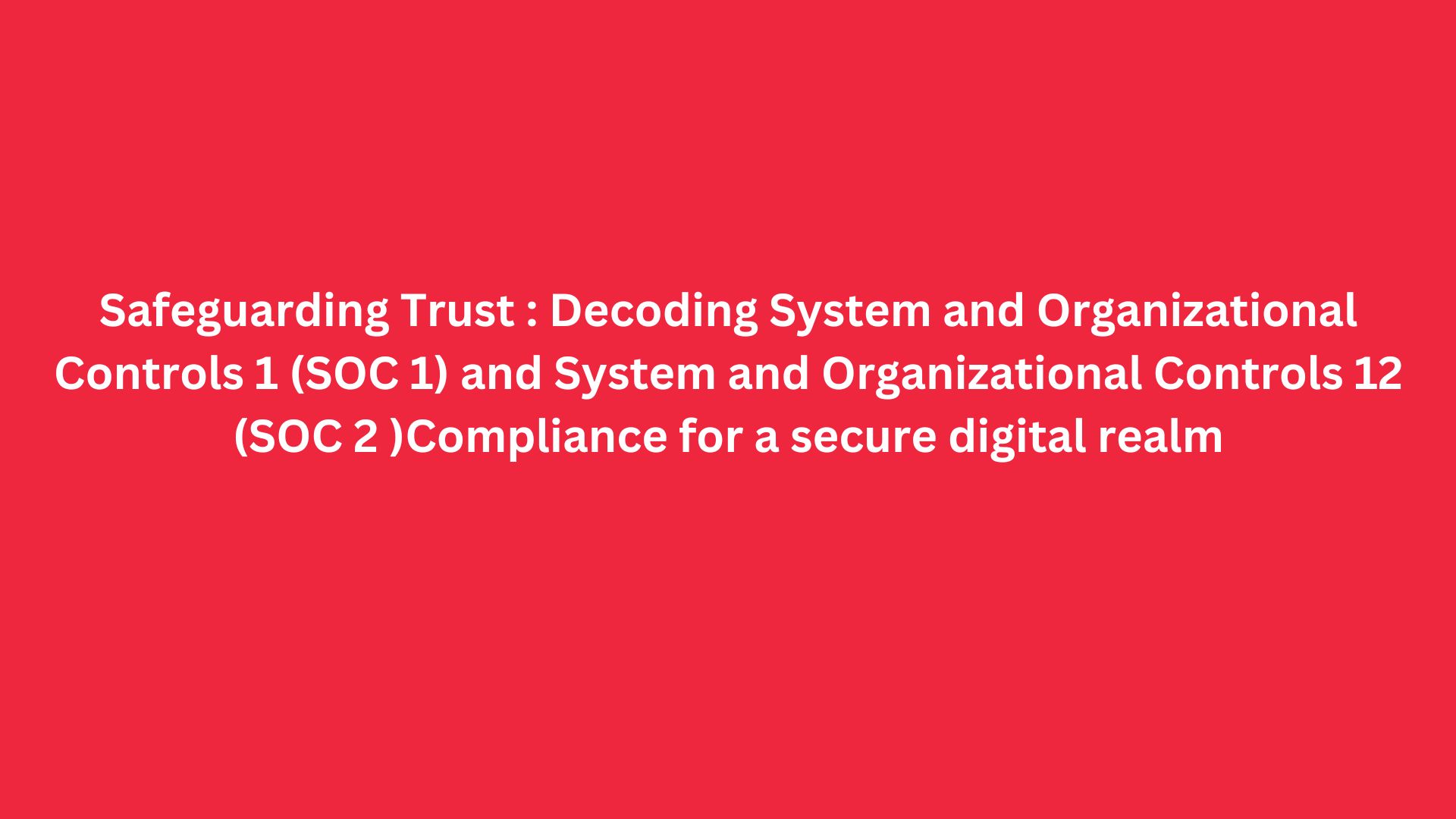Safeguarding Trust : Decoding System and Organizational Controls 1 (SOC 1) and System and Organizational Controls 12 (SOC 2 )Compliance for a secure digital realm
In the ever-evolving landscape of digital interactions and data-driven economies, the pivotal importance of cybersecurity and data protection has gained prominence like never before. Amid this backdrop, SOC 1 and SOC 2 compliance have emerged as the vanguards of trust and security, fortifying businesses against the relentless onslaught of cyber threats and vulnerabilities.

SOC 1: Ensuring Operational Authenticity
SOC 1 compliance grants stakeholders, including auditors and clients, the assurance that a service organization’s operations are conducted in a manner that preserves data authenticity and financial accuracy. This is particularly relevant for entities that process transactions, manage payroll services, or offer other outsourced services that affect their clients’ financial statements.
SOC 2: Nurturing Security, Availability, Processing Integrity, Confidentiality and Privacy ( SAPIP)
The digital realm is a bustling marketplace of information exchange, with data flowing seamlessly across virtual landscapes. However, this digital flux also presents an avenue for potential data breaches, service disruptions, and privacy infringements. Enter SOC 2 compliance, the sentinel of security, availability, processing integrity, confidentiality, and privacy (SAPIP).
SOC 2 dives deep into a service organization’s controls to ensure that data is secure, systems are available when needed, processing is accurate and complete, sensitive information remains confidential, and privacy commitments are upheld. Think of SOC 2 as a guardian of the quintessential pillars that sustain the digital ecosystem’s integrity.
Unveiling the unique lexicon of compliance
The lexicon of SOC compliance is brimming with distinctive terminologies that unveil a world of diligence and protection. Let’s explore some of these unique terms:
- Control Objectives :These are the lofty goals that organizations strive to achieve through their internal controls, safeguarding their operations and data.
- Trust Services Principles: The guiding lights of SOC 2 compliance, these principles encompass security, availability, processing integrity, confidentiality, and privacy, constituting the foundation of digital trust.
- Subservice Organizations: In a world of intricate service chains, subservice organizations are the supporting actors, providing crucial functions to the main service organization. Their controls also impact compliance assessments.
- Description Criteria: This is the yardstick against which a service organization’s system and controls are evaluated. Akin to setting the stage, description criteria establish the context for the compliance audit.
- Common Criteria: A set of standards used for evaluating and certifying information security products, ensuring a consistent measure of security effectiveness across the industry.
Nurturing Assurance and Confidence
In a landscape where data breaches can dismantle years of hard-earned trust in an instant, SOC 1 and SOC 2 compliance emerge as the sentinels of assurance. Their audits and assessments weave a narrative of meticulous scrutiny, highlighting an organization’s commitment to safeguarding data, preserving authenticity, and upholding digital integrity.
As digital interactions continue to redefine business paradigms, SOC compliance serves as a testament to an organization’s dedication to not only meeting industry standards but surpassing them. In this symphony of security, each unique term and concept plays its part, creating a harmonious composition that resounds with trust and confidence in the digital age.
For any enquiries related to SOC 1 and SOC 2 please contact : [email protected] , [email protected] and Whatsapp at : +971 50 4773274